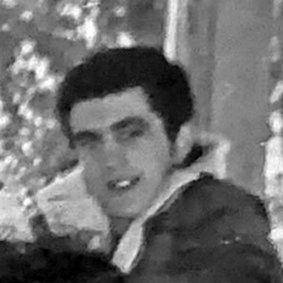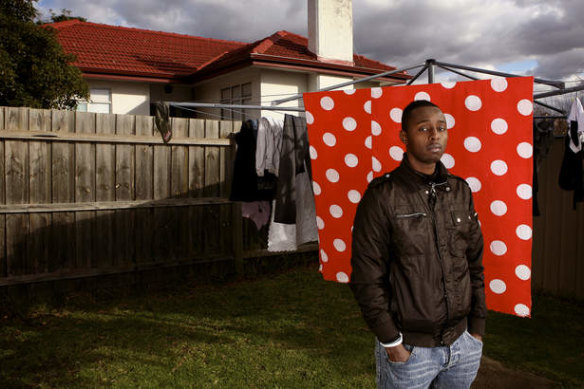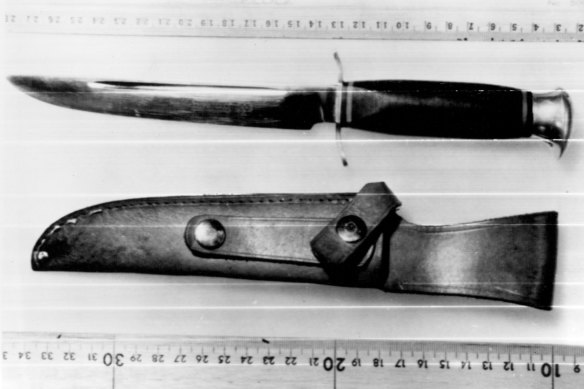- Analysis
- Politics
- Victoria
- Naked City
This was published 5 months ago
The crucial DNA questions that remain over Easey Street cold case
John Silvester lifts the lid on Australia’s criminal underworld in Naked City, an exclusive newsletter for subscribers sent every Thursday. You’re reading an excerpt – sign up to get the whole newsletter in your inbox.

Perry Kouroumblis as a teenager.Credit:
The arrest of a suspect for the 1977 murders of Suzanne Armstrong and Susan Bartlett in their Easey Street home will most likely lead to a ferocious forensic examination of a science that did not exist at the time of the crime − the capture and examination of DNA.
It was 10 years after Easey Street that DNA profiling was first used, leading to the conviction of Colin Pitchfork for the rape and murder of two 15-year-old girls in neighbouring Leicestershire towns.
What we do know is police allege there has been a match between a sample taken at the Easey Street crime scene and the man arrested, Perry Kouroumblis, who was a teenager at the time and lived a few streets away. What we think we know is the DNA result, as a matter of routine, will have been confirmed from multiple samples.
Kouroumblis moved to Greece in 2017, shortly after he was asked for a DNA sample to eliminate him from the investigation. At first, he agreed but reneged, flying to Athens not long after.
He was arrested last month when he left Greece, where he was safe from extradition because of local statute of limitations laws, and flew to Italy, where he was not protected.
Kouroumblis has said he will not fight extradition, which is hardly surprising. The prison where he is being held is basic and would not get one star from inmate Google reviews. He is also an Australian Greek and could hardly expect comprehensive Italian legal aid for an alleged crime he committed in another country.
More than once, the justice system has been blinded by science, and in Victoria, more than once a suspect has been wrongly convicted based on what appears to be black-and-white forensic results.
In 2008, Farah Jama was convicted of rape and served 15 months exclusively on DNA evidence. There were no witnesses, fingerprints or confession − just DNA. The conviction was quashed when it was discovered the sample was contaminated.

Farah Jama received half a million dollars in compensation after being wrongly jailed based on contaminated DNA evidence.Credit: Julian Kingma
A subsequent review by former Supreme Court Judge, Frank Vincent found: “The DNA evidence appears to have been viewed as possessing an almost mystical infallibility. The outcome was, in the circumstances, patently absurd.”
Since then, DNA alone is not sufficient to gain a conviction, and so police in the Easey Street case will need to build a bank of evidence to allege how and why the accused was in the house of the two victims.
Jama was the victim of a wicked miscarriage of justice, but spare a thought for Colin Campbell Ross, who was hanged in 1922 for the murder of 12-year-old Alma Tirtschke. The key evidence was hairs found on a mattress at Ross’ home, declared to be from the victim. In 1998, a test by the Victorian Institute of Forensic Medicine found they were not from the victim’s scalp and Ross was posthumously pardoned.
When Kouroumblis returns to Melbourne for trial, his lawyers will be duty-bound to explore the chain of evidence. Who took the samples from the murder scene, where were they stored for more than 40 years, and how can we be convinced they have not been compromised?

The knife said to have been found on train tracks in Collingwood.
Kouroumblis was stopped days after the killings and well-known homicide detective Ron Iddles, then a uniformed constable, found a bloodied knife in the boot of the teenager’s car. The suspect said he found it on nearby railway tracks.
A few days later, a police inspector was photographed in the papers holding the knife in his bare hand. How can you trust DNA tests if that’s how they handled exhibits back then? How do we know that is the murder weapon?
The suspect was a local burglar. His lawyers might ask: could a local detective have checked a break-in and then later gone to Easey Street, accidentally bringing with him DNA from the first crime scene?
What we do know is police have not been sitting back since 2017 in the hope their suspect would leave Greece so he could be grabbed. Diplomats and cops on both sides of the world have been quietly working away for years, often more in hope than expectation.
Detectives will have built a detailed profile of the suspect and tracked his movements, as best they can when he was a troubled teenager back in 1977.
There is a big story to be told, part true crime and part international spy thriller, that will examine the suspect’s past, the initial investigation, the cold case probe and his ultimate arrest, but that will first be told in the courts.
In a cold case, time is on the killer’s side. Once a suspect is identified, it is the police who control the clock.
Start the day with a summary of the day’s most important and interesting stories, analysis and insights. Sign up for our Morning Edition newsletter.